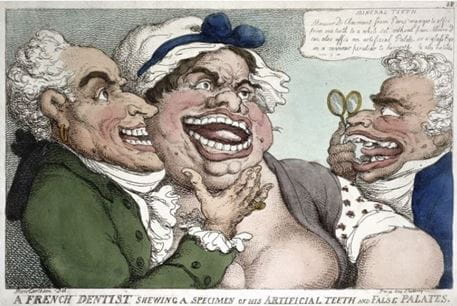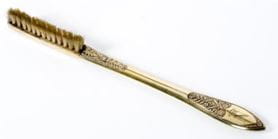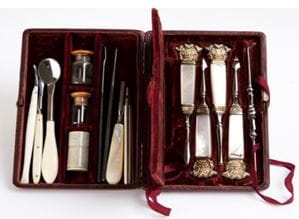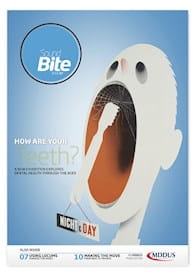 DENTISTRY in the 17th century was a
dirty job that no self-respecting member
of the established medical profession
would deign to carry out. Pain relief was more
or less unheard of and low-skilled barbers and
blacksmiths would use the most basic of tools to
pull rotten teeth.
DENTISTRY in the 17th century was a
dirty job that no self-respecting member
of the established medical profession
would deign to carry out. Pain relief was more
or less unheard of and low-skilled barbers and
blacksmiths would use the most basic of tools to
pull rotten teeth.
It is these bad old days – long before the concept of oral hygiene had found its way into public consciousness – that the latest exhibition of the Wellcome Collection museum so vividly brings to life.
The new show, simply entitled Teeth, charts the evolution of our relationship with our teeth and of the dental profession itself. It winds its way from the grimness of medieval times, through the emergence of the smile in the 19th century (when dentistry finally began to have a positive impact), and on to the Hollywood smiles of modern day.
 “The exhibition puts in context that the
dentistry we experience today is a lot less
invasive, quicker and more heavily managed in
terms of pain,” says curator Emily Scott-
Dearing. “It certainly made me hugely grateful I
live in the era that I do… But I’m definitely
brushing my teeth more these days.”
“The exhibition puts in context that the
dentistry we experience today is a lot less
invasive, quicker and more heavily managed in
terms of pain,” says curator Emily Scott-
Dearing. “It certainly made me hugely grateful I
live in the era that I do… But I’m definitely
brushing my teeth more these days.”
Drawing on the rich collections assembled by Henry Wellcome alongside loans from collections such as the British Dental Association museum in London, the exhibition features more than 150 objects. These include cartoons and caricatures, protective amulets, toothpaste advertisements and a range of chairs, drills and training tools.
 Visitors can see the hygiene set used by
Queen Victoria’s dentist, the dentures
belonging to King William IV and even
Napoleon’s silver-handled toothbrush. Also on
display are the aluminium dentures made for an
RAF corporal in a Burmese prisoner-of-war
camp, plus a sinister looking wooden phantom
head embedded with real human teeth.
Visitors can see the hygiene set used by
Queen Victoria’s dentist, the dentures
belonging to King William IV and even
Napoleon’s silver-handled toothbrush. Also on
display are the aluminium dentures made for an
RAF corporal in a Burmese prisoner-of-war
camp, plus a sinister looking wooden phantom
head embedded with real human teeth.
Another theme explored in the London-based museum is dental phobia. The exhibition’s final section, entitled Our Friend the Dentist, considers why anxiety remains so high despite the many technological advances. It is certainly easy to understand the fears of early dental patients judging by the rudimentary tools available at the time. A 17th century sculpture of a tooth extraction looks a particularly unpleasant experience.
• Teeth runs until 16 September, 2018 at the Wellcome Collection museum in Euston Road, London. Admission is free. Find out more on the Wellcome Collection website
PHOTOS from top (courtesy of Wellcome Collection): A French dentist showing a specimen of his artifical teeth and false palates, coloured engraving, 1811; Napoleon Bonaparte's toothbrush with silver handle and horsehair bristles, 1790-1820; instrument set for Queen Victoria's dentist Sir Edwin Saunders (1814-1901).
This page was correct at the time of publication. Any guidance is intended as general guidance for members only. If you are a member and need specific advice relating to your own circumstances, please contact one of our advisers.
Read more from this issue of Insight Primary

Save this article
Save this article to a list of favourite articles which members can access in their account.
Save to library